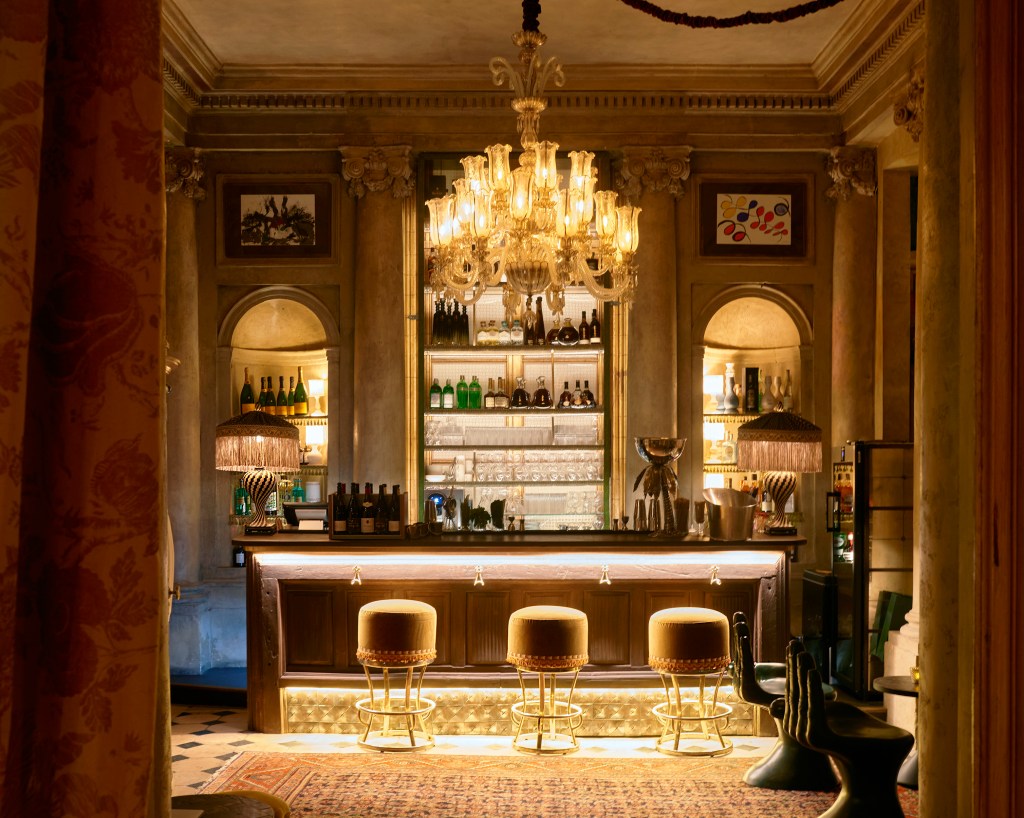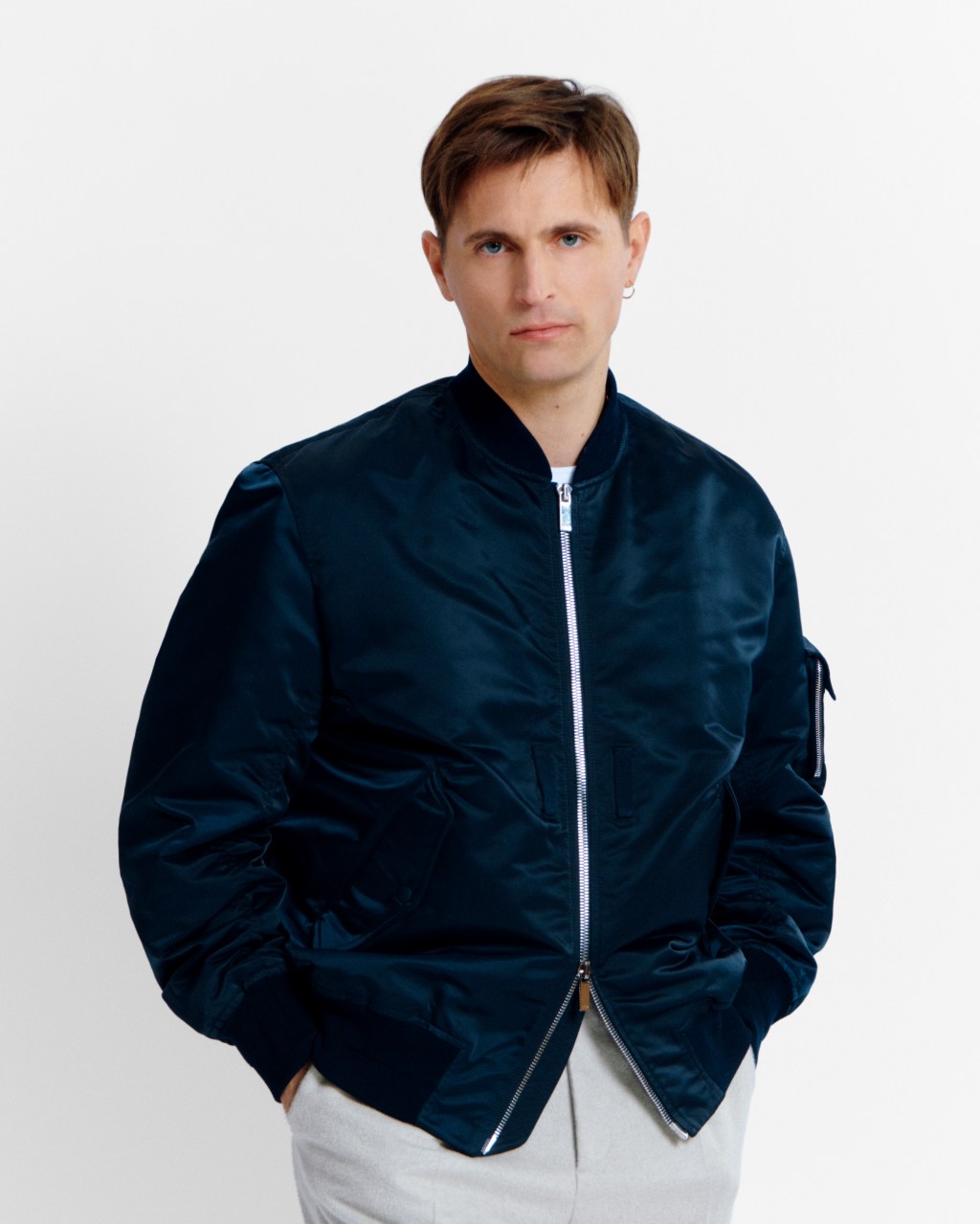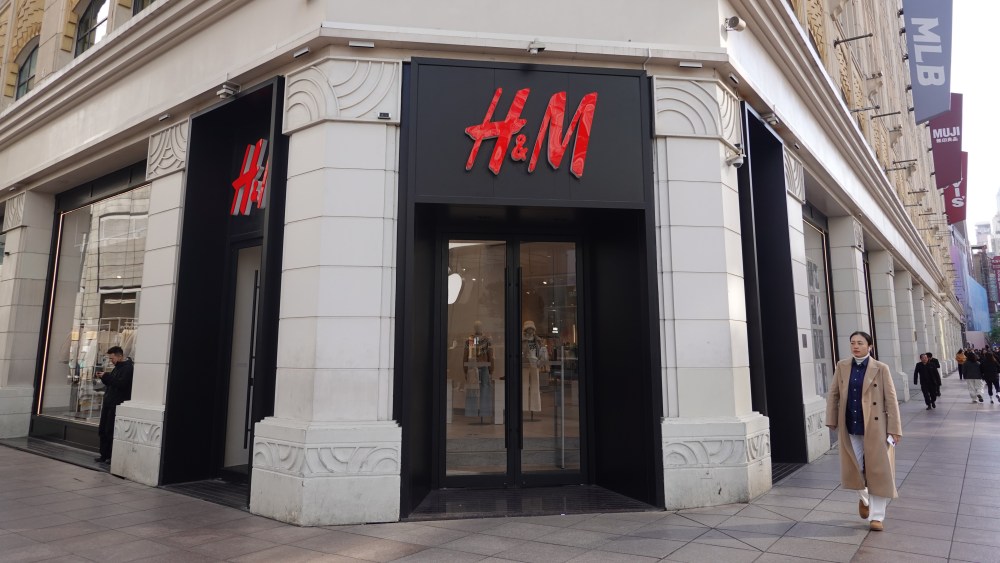In the Marquis de Lafayette’s former Paris townhouse, the party’s about to get restarted.
The 17th-century French general might be best remembered as a hero of the American War of Independence and a central figure of the French Revolution, but it’s the genial epicurean host who inspired Lafayette’s, the latest address from hospitality specialist Moma Group on Rue d’Anjou.
Restored to its former glory, the 4,300-square-foot ground floor of the marquis’ former residence is a restaurant can seat up to 100 guests in its main rooms but also the more secluded pantry, a chef’s table of sorts. There’s also a wine cellar on the lower level that can be privatized.
“You can put millions on the table but you can’t buy time or history,” says the group’s founder Benjamin Patou, who fell under the charm of the historic town house a stone’s throw from the Élysée Palace on a side street to tony Rue du Faubourg Saint-Honoré back in the 2010s. When the place came up for sale in 2019, the entrepreneur had formed a joint venture with friend Romain Costa, founder of the Blackcode Group that owns upscale eateries such as Kinugawa, for a first restaurant.
But eventually Patou wanted more than another successful address.
Calling the French marquis “the Gatsby of the 17th century” and his town house a place whose “walls exudes parties, opulence, glamour, anecdotes,” Patou wanted to recapture “the authentic magic” of his grand old home but felt the place needed to be approached “in a 2023 way, in the France of 2023,” rather than settle for a “Disneyland of a reconstitution.”

To get the walls hidden behind the sandstone facade of 8 Rue d’Anjou to walk the fine line between expressing their lineage and being overly referential, Patou called on Lázaro Rosa-Violán, no less than “the Mbappé of design” for the hospitality entrepreneur — and a family friend. The Barcelona-based interiors star was so charmed by the place that he took on the project under his own name.
Summarizing Patou’s description of Lafayette as “a defender of freedoms, a traveler, an adventurer and someone who was very open to the world” is a wood carving imagined by Rosa-Violán that takes pride of place opposite the entrance.
Dotted here and there are works on loan from 150-year-old family-owned art and antiques gallery Kraemer, ranging from a tapestry from the Manufacture Royale des Gobelins and dating back to the reign of Louis XIV to a 1978 sketch by Joan Miró.
The interior designer was also the one who suggested opening the walls between rooms, adding a feeling of airiness to formal-feeling gilded salons. Candlelight, the preferred lighting method, caps off the impression of a grand home abuzz with life.
That left Patou with one final decision to make: finding the person who could bake the place’s historical, cultural yet hyper-contemporary identity into every dish.
The one for the job in his eyes? Mory Sacko, the breakout star of the 11th season of France’s “Top Chef” culinary contest, a chef of Senegalese and Malian descent who wowed the public and judges’ hearts as much for his inventive fare as his sunny disposition.

Only months after the show, the chef had his first Michelin star with his restaurant Mosuke in Paris. Since then, attention on the 31-year-old has not abated. He’s gone from strength to strength, including imagining recipes for the Louis Vuitton restaurant in the White 1921 hotel in Saint Tropez. Time magazine even chose him for the cover of the edition highlighting the year’s 100 rising movers and shakers.
When Patou approached Sacko with the project, the chef already had a hankering to explore a different path from the Japanese and African influences he’d been developing in his first restaurant.
As any good journey, this one “ends around a table, because we are in France and everything always ends there,” the chef says.
“Travel is above all curiosity and a desire to discover others,” he says. “I’d always had in the back of my mind the desire to offer a cuisine that could be at the confluence of French gastronomy, so rather Parisian, and the influences that are mine.”

What made him say yes to this project was the connection he formed with Patou and Rosa-Violán but also the lack of nostalgia. “There was just the evolution of a journey through time,” Sacko says.
With images of very French table settings rife with silverware, candelabras and porcelain — sourced by cook and interior designer Isabelle Moltzer — already floating in his head, Patou’s project and the stage Rosa-Violán was setting, the menu for Lafayette’s sprang into existence as “a cuisine of the three worlds, between French gastronomy and Parisian brasserie, marked by nods to the American continent and recipes that hail from the African continent.”
On the table at Lafayette’s are a very French pâté en croûte, with Chicken Yassa inside; an all-American corn soup under a puff pastry; Lafayette’s fried chicken, served in a woven silver basket; a buttery sole meunière with a Champagne sauce and, of course, an all-American classic cheeseburger made of matured beef, aged cheddar and relish. They can be paired with French fries with a Cajun seasoning, a fried plantain version or an herby “attiéké,” a granulated cassava side dish. Finishing off the menu are a caramelized mango tatin tart, or an hibiscus panna cotta topped with bissap jelly and fresh pomegranate seeds.

Then there’s the restaurant’s expansive selection of wines. The list spans France’s and Europe’s winemaking regions but also rarer finds like chardonnay vintages from Napa Valley’s Inglenook estate and the Kistler Vineyards in California.
If for Patou, “the greatest satisfaction is to have a place that looks like no other,” Sacko goes one step further.
“I’d like for people to leave with a desire to come back – alone, with the same people, with another group — but come back,” the chef says. “That’s when I know the job’s well done.”



